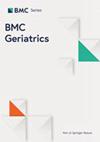环境温度对老年高血压患者非意外死亡率的影响,一项基于队列的研究
IF 3.8
2区 医学
Q2 GERIATRICS & GERONTOLOGY
引用次数: 0
摘要
环境温度与死亡率之间的关系尚无定论,以往的研究主要依靠住院患者的数据来评估温度对健康的影响。因此,我们在中国东北地区开展了一项前瞻性队列研究,旨在估算环境温度对老年高血压患者非意外死亡率的影响。研究共纳入了开滦研究的 9634 名老年高血压患者,他们参加了 2006 年 1 月 1 日至 2017 年 12 月 31 日的基线调查和随访。我们采用泊松广义线性回归模型来估计每月环境温度和温度变化对非意外死亡率的影响。调整气象参数后,月平均气温(RR = 0.989,95% CI:0.984-0.993,p < 0.001)、最低气温(RR = 0.987,95% CI:0.983-0.992,p < 0.001)和最高气温(RR = 0.989,95% CI:0.985-0.994,p < 0.001)与非意外死亡风险增加呈负相关。每月气温变化较大与死亡风险升高显著相关(RR = 1.097,95% CI:1.051-1.146,p < 0.001)。进一步的分层分析表明,这些关联在寒冷月份以及男性和老年人中更为明显。据观察,气温降低和环境温度变化较大与老年高血压患者的非意外死亡有关,这一点在老年人群和男性中尤为明显。这些关于环境温度对死亡率影响的认识对于针对这些人的适当治疗策略具有临床意义,同时也可作为死亡风险增加的指标。本文章由计算机程序翻译,如有差异,请以英文原文为准。
The effects of ambient temperature on non-accidental mortality in the elderly hypertensive subjects, a cohort-based study
The association between ambient temperature and mortality has yielded inconclusive results with previous studies relying on in-patient data to assess the health effects of temperature. Therefore, we aimed to estimate the effect of ambient temperature on non-accidental mortality among elderly hypertensive patients through a prospective cohort study conducted in northeastern China. A total of 9634 elderly hypertensive patients from the Kailuan research who participated in the baseline survey and follow-up from January 1, 2006 to December 31, 2017, were included in the study. We employed a Poisson generalized linear regression model to estimate the effects of monthly ambient temperature and temperature variations on non-accidental mortality. After adjusting for meteorological parameters, the monthly mean temperature (RR = 0.989, 95% CI: 0.984–0.993, p < 0.001), minimum temperature (RR = 0.987, 95% CI: 0.983–0.992, p < 0.001) and maximum temperature (RR = 0.989, 95% CI: 0.985–0.994, p < 0.001) exhibited a negative association with an increased risk of non-accidental mortality. The presence of higher monthly temperature variation was significantly associated with an elevated risk of mortality (RR = 1.097, 95% CI:1.051–1.146, p < 0.001). Further stratified analysis revealed that these associations were more pronounced during colder months as well as among male and older individuals. Decreased temperature and greater variations in ambient temperature were observed to be linked with non-accidental mortality among elderly hypertensive patients, particularly notable within aging populations and males. These understanding regarding the effects of ambient temperature on mortality holds clinical significance for appropriate treatment strategies targeting these individuals while also serving as an indicator for heightened risk of death.
求助全文
通过发布文献求助,成功后即可免费获取论文全文。
去求助
来源期刊

BMC Geriatrics
GERIATRICS & GERONTOLOGY-
CiteScore
5.70
自引率
7.30%
发文量
873
审稿时长
20 weeks
期刊介绍:
BMC Geriatrics is an open access journal publishing original peer-reviewed research articles in all aspects of the health and healthcare of older people, including the effects of healthcare systems and policies. The journal also welcomes research focused on the aging process, including cellular, genetic, and physiological processes and cognitive modifications.
 求助内容:
求助内容: 应助结果提醒方式:
应助结果提醒方式:


